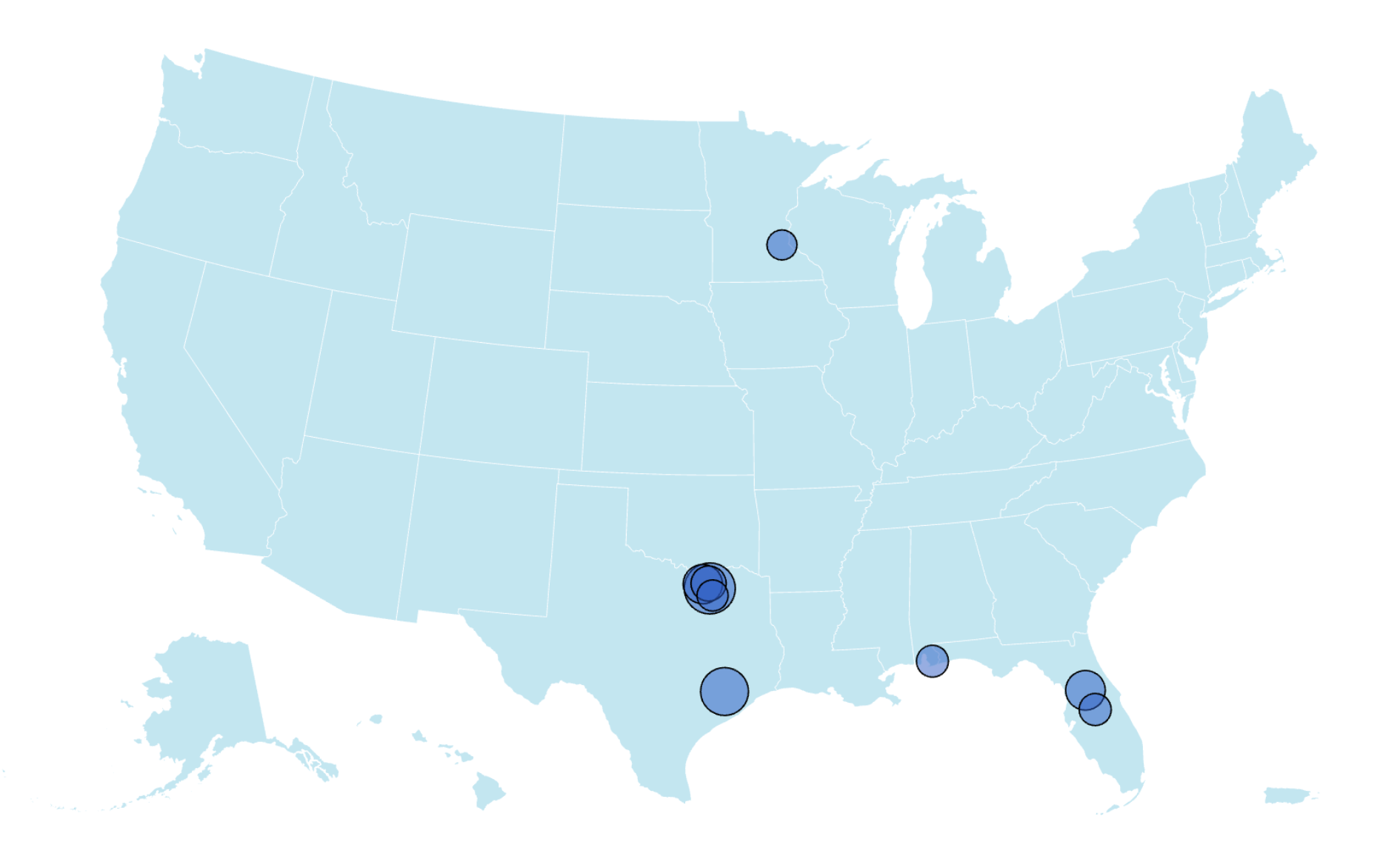
Cities of all sizes and in all regions of the United States experienced a boost in population from 2023 to 2024, even metropolitan areas in the Northeast that had reported declines in recent years, according to new data from the Census Bureau.
Continuing a trend that has dominated the past decade, Southern and Western cities experienced the fastest population growth in the country, with a Texas city—Princeton—topping the list with a 30.6 percent growth rate.
Though the South is still a very popular destination for Americans relocating to other parts of the country, some small cities in the region have seen their growth stalling between 2023 and 2024.
Why It Matters
The COVID pandemic unbridled an exodus of remote workers leaving expensive, crowded metropolises for more-affordable, often more-livable places across the country. Florida and Texas, together with other Southern and Midwestern states, hugely benefited from this movement, reporting significant population boosts, while cities in the Northeast and Southwest suffered some losses.
But things have started to change after the end of the pandemic, when return-to-office orders summoned former remote workers back into their place of employment. On top of that, popular destinations such as Florida are becoming less appealing due to the growing risk of devastating extreme weather events and rising housing costs.
What To Know
Cities with bigger populations experienced the biggest population gains from 2023 to 2024, Census data found. Those with populations between 5,000 and 9,999 grew by an average 1 percent; those with populations between 10,000 and 49,999 by 1.1 percent; and those with populations of 50,000 and over by 1 percent.
By comparison, smaller cities—with a population of less than 5,000—grew by 0.3 percent on average only.
The absolute winner in terms of fastest population gain was Princeton, Texas, which saw the most-explosive such boom in the country. The city more than doubled its population since 2020, going from roughly 17,000 to 37,000.
Following Princeton in a list of the 10 fastest-growing cities in the country during the 12 months between July 1, 2023 and July 1, 2024 were Fulshear, Texas (26.9 percent); Leesburg, Florida (18.5 percent); Celina, Texas (18.2 percent); Anna, Texas (14.6 percent); Haines City, Florida (12.1 percent); Foley, Alabama (12 percent); Fate, Texas (11.4 percent); Rosemount, Minnesota (10.6 percent) and Garner, North Carolina (10.4 percent).
The 10 cities with the biggest numeric increases between the same time frame were New York City, New York (up by 87,184 residents); Houston, Texas (up by 43,217); Los Angeles, California (up by 31,276); San Antonio, Texas (up by 23,945); Fort Worth, Texas (up by 23,442); Charlotte, North Carolina (up by 23,423); Chicago, Illinois (up by 22,164); Phoenix, Arizona (16,933); Seattle, Washington (up by 16,813); and Jacksonville, Florida (up by 16,365).
It was the first time since 2016 that Los Angeles featured on the Census’ list of top gainers. Jacksonville and Fort Worth both crossed the 1 million-population threshold, with respectively 1,009,833 and 1,008,106 residents.
Surprisingly, Washington, D.C., experienced the 11th-largest population increase, adding up 14,926 residents to reach a total of 702,250. Crucially, these data precede Elon Musk‘s Department of Government Efficiency’s drastic cut to the federal workforce, a move that experts say is bound to affect Washington and the city’s housing market. The city nearly doubled its population gain compared to the year before.
What People Are Saying
Crystal Delbé, a statistician in the Census Bureau’s Population Division, said in a press release: “Many population growth rates reversed or saw major changes between 2023 and 2024. Cities in the Northeast that had experienced population declines in 2023 are now experiencing significant population growth, on average.
“In fact, cities of all sizes, in all regions, showed faster growth and larger gains than in 2023, except for small cities in the South, whose average population growth rate remained the same.”
What Happens Next
The latest data provided by the Census reflect historic trends that are expected to continue, including the growth of the South and the West.
But things are changing across the country: popular destinations such as Florida and Texas are seeing a slowdown in in-migration (the process of relocating to a different part of one’s home country) compared to the pandemic.
Furthermore, climate change is making parts of the nation more expensive to live in, potentially making them less appealing for Americans wishing to move.
U.S. Census Bureau
